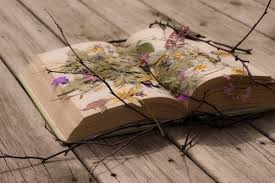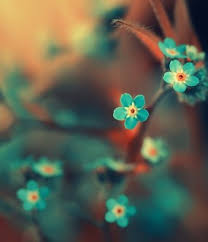Your favorite season says a lot about you. For example, those who favor fall are often contented creatures who become excited by the simple pleasures of life. Summer lends itself to people who are outgoing and love to be with others. Winter is usually held dear by those who are introverted, pensive and prefer a good book to a wild party. Finally, Spring is often beloved by individuals who seek change, are creative and are deeply moved by beauty.
There are several famous historical artists who seemingly preferred Spring above all other seasons. This assumed preference is made evident in their multiple pieces of artwork featuring Spring-related themes. We like to believe Monet and Renoir adored Spring in all its glory.
Monet’s Paintings Reveal His Affinity for the Season of New Beginnings
 Artist Oscar-Claude Monet (1840-1926) was more than just a founder of French Impressionist painting; he was also a lover of nature. The earth was Monet’s muse, and he obviously took great delight in painting Springtime scenes. One of his most famous Spring-related pieces is simply titled Le Printemps (the Spring) and was completed in 1886. The piece depicts two women dreamily sitting beneath a tree that is freshly blooming. Another is Le Printemps (auprès de Vétheuil), painted in 1880. This piece is simple and quite understated, though no less breathtaking than any of Monet’s works. Fields in Spring is another enchanting piece that features a parasol-covered lady drifting through a Springtime field filled with wildflowers. In all three paintings, many cool-toned colors are used, creating the effect of a refreshing Spring breeze. These paintings are just a small sampling of the Spring-themed works of art Monet created in his lifetime.
Artist Oscar-Claude Monet (1840-1926) was more than just a founder of French Impressionist painting; he was also a lover of nature. The earth was Monet’s muse, and he obviously took great delight in painting Springtime scenes. One of his most famous Spring-related pieces is simply titled Le Printemps (the Spring) and was completed in 1886. The piece depicts two women dreamily sitting beneath a tree that is freshly blooming. Another is Le Printemps (auprès de Vétheuil), painted in 1880. This piece is simple and quite understated, though no less breathtaking than any of Monet’s works. Fields in Spring is another enchanting piece that features a parasol-covered lady drifting through a Springtime field filled with wildflowers. In all three paintings, many cool-toned colors are used, creating the effect of a refreshing Spring breeze. These paintings are just a small sampling of the Spring-themed works of art Monet created in his lifetime.
Renoir: Another Lover of Spring
 Monet wasn’t the only Impressionist painter to prefer the Spring season; Pierre-Auguste Renoir (1841-1919) did also. Spring Bouquet is perhaps his most famed piece of Spring-themed artwork. Spring Bouquet, completed in 1866, appears more in-focus that our friend Monet’s artwork. This exquisite painting features crisp, cool colors that perfectly animate the flowers represented in the piece. Other beloved Spring-related works of art created by Renoir include Spring Landscape and Spring at Chatou (1872).
Monet wasn’t the only Impressionist painter to prefer the Spring season; Pierre-Auguste Renoir (1841-1919) did also. Spring Bouquet is perhaps his most famed piece of Spring-themed artwork. Spring Bouquet, completed in 1866, appears more in-focus that our friend Monet’s artwork. This exquisite painting features crisp, cool colors that perfectly animate the flowers represented in the piece. Other beloved Spring-related works of art created by Renoir include Spring Landscape and Spring at Chatou (1872).
Speaking of historical artists, have you seen our new digital paint-by-number Historical Figures pattern sets? Designed for use on a smart phone or tablet, Historical Figures 1, 2 and 3 are cheap, amazingly fun, and bring art right to your fingertips. Check them out by downloading our FREE SegPlay Mobile app, available on iTunes and Google Play. Use the comments section below to let us know how much you like these new patterns!
Of all the Spring-themed works of art mentioned in this article, which do you like best? Can you think of other famous historical artists who seemed to favor Springtime?
Claude Monet – Founder of French Impressionism
The Expressive Vincent van Gogh
Camille Pissarro – Father of Impressionism
Be an Artist in 2 minutes with Segmation SegPlay® PC (see more details here)
Join us on FacebookSegPlay® Mobile iTunes now available for iPhone and iPad







 How to attract the opposite sex has been a hot topic throughout the ages. It has also been the subject of many academic and scientific studies. Those who study human behavior are discovering more everyday about the factors that can help individuals attract love interests.
How to attract the opposite sex has been a hot topic throughout the ages. It has also been the subject of many academic and scientific studies. Those who study human behavior are discovering more everyday about the factors that can help individuals attract love interests. Red is a color that both sexes are equally attracted to. Of all the colors a woman can wear, shades from the red family are usually the most attention-grabbing and attractive of all.
Red is a color that both sexes are equally attracted to. Of all the colors a woman can wear, shades from the red family are usually the most attention-grabbing and attractive of all.

 To understand syntonics, you must first understand color. Color is not just something lovely to look at; it actually emits physical frequencies, or vibrations. Different colors emit different frequencies. Researchers in the field of vision therapy have discovered what color frequencies, when received through the visual system, treat specific health problems.
To understand syntonics, you must first understand color. Color is not just something lovely to look at; it actually emits physical frequencies, or vibrations. Different colors emit different frequencies. Researchers in the field of vision therapy have discovered what color frequencies, when received through the visual system, treat specific health problems. Seasonal affective disorder (SAD)
Seasonal affective disorder (SAD)

 Tehran, Iran –
Tehran, Iran –  Is it possible for someone to learn to draw in a short period of time? More specifically, can one learn to draw well in a matter of weeks?
Is it possible for someone to learn to draw in a short period of time? More specifically, can one learn to draw well in a matter of weeks?

